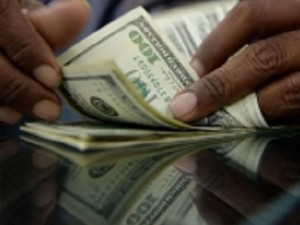Forex reserves rose to $82.9B in July

The country’s foreign exchange reserves inched up in July due to the aggressive buying of dollars by the central bank to control fluctuations in the peso’s value.
The increase in reserves in July, following three consecutive months of decline, means the country can now pay for a year of the country’s imports like fuel and food in the event of any external shocks that could cause a shortage of dollars.
Bangko Sentral ng Pilipinas (BSP) documents released Wednesday showed that the gross international reserves (GIR) increased to $82.9 billion at the end of July from $81.3 billion the month before.
“At this level, reserves can adequately cover 12 months’ worth of imports of goods and payments of services and income,” BSP Governor Amando M. Tetangco Jr. said in a statement.
The GIR can also pay for 8.5 times the country’s short-term foreign obligations, based on their original maturities.
Higher prices of gold and other foreign currencies included in the reserves basket and the BSP’s foreign exchange operations were the main contributors to the higher GIR for the month.
While the BSP allows the peso’s value to be determined by market forces, the central bank steps in from time to time through its open market operations to smoothen out any spikes in the exchange rate.
A more stable peso benefits companies and households that earn or spend dollars because it makes for a more predictable planning of their expenses and expected income.
The dollar, which is the world’s most used currency, makes up 60 percent of the country’s reserves. The BSP earlier said it planned to diversify the types of currencies in the GIR to reduce the effects of changes in the greenback’s value on the country’s reserves.
Foreign currency deposits by the National Treasury, which included proceeds from a program loan from a multilateral institution, as well as income from investments abroad also helped bump up the GIR numbers.
These were partially offset by the national government’s payment of maturing foreign obligations.
Net international reserves, or the difference between the GIR and short-term liabilities, increased to $82.9 billion, or up $1.7 billion month on month.
